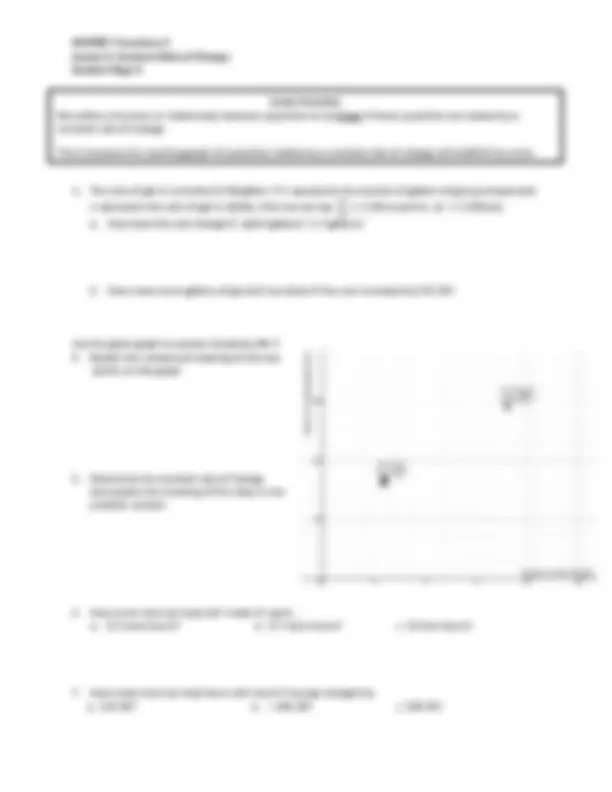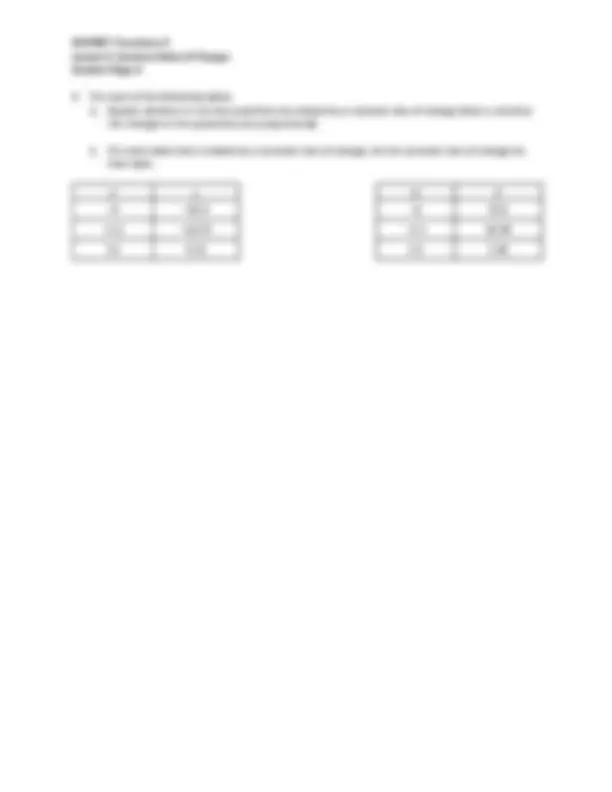




Study with the several resources on Docsity

Earn points by helping other students or get them with a premium plan


Prepare for your exams
Study with the several resources on Docsity

Earn points to download
Earn points by helping other students or get them with a premium plan
Community
Ask the community for help and clear up your study doubts
Discover the best universities in your country according to Docsity users
Free resources
Download our free guides on studying techniques, anxiety management strategies, and thesis advice from Docsity tutors
A lesson on constant rate of change, explaining how to determine if two quantities are proportional using an example of water height and time elapsed. It also covers how to calculate the constant rate of change and its meaning in different contexts, such as cost and work hours. Exercises to practice these concepts.
Typology: Slides
1 / 4

This page cannot be seen from the preview
Don't miss anything!



Lesson 2: Constant Rate of Change Student Page A
Constant Rate of Change
Recall our definition of Constant Rate of Change: Two quantities are related by a constant rate of change if the changes in the quantities are proportional to one another.
b. Demonstrate that the quantities are related by a constant rate of change (that is, the changes in quantities are proportional).
Time Elapsed in min t
Height of water in tank in cm h
1.8 13.
2.5 15.
3.9 20.
7.4 33.
How to Determine the Constant Rate of Change In general, If two quantities are related by a constant rate of change of output with respect to input , we can determine the value of that rate by…
Lesson 2: Constant Rate of Change Student Page A
b. How much less was the height of water in the tank 3.1 minutes earlier (from any time/height measurement)?
c. If I know that the top of the tank is 18 cm above the current height of water, how much more time should I let the water run so that it is full?
d. Explain the meaning of the coordinate points (0.7, 6.45) and (10.3, 40.05) given in the table and graph.
e. Represent a change in time of 2 minutes from 0.7 minutes on the table and graph. Then, represent the associated change in height of water (found in part a) on both. f. Represent a change in time of 6 minutes from 0.7 minutes on the table and graph. Then, represent the associated change in height of water (found in part a) on both. g. Represent a change in time of –3.1 minutes from 10.3 minutes on the table and graph. Then, represent the associated change in height of water (found in part c) on both. h. Represent a change in height of 18 cm from 40.05 cm on the table and graph. Then, represent the associated change in time elapsed (found in part d) on both.
Time elapsed (in min)
Height of water (in cm)
Lesson 2: Constant Rate of Change Student Page A
b. For each table that is related by a constant rate of change, list the constant rate of change for that table.
a y m b –4 –42.8 –6 35.
–1.6 –26.72 –3.1 24.
3.6 9.12 2.6 1.